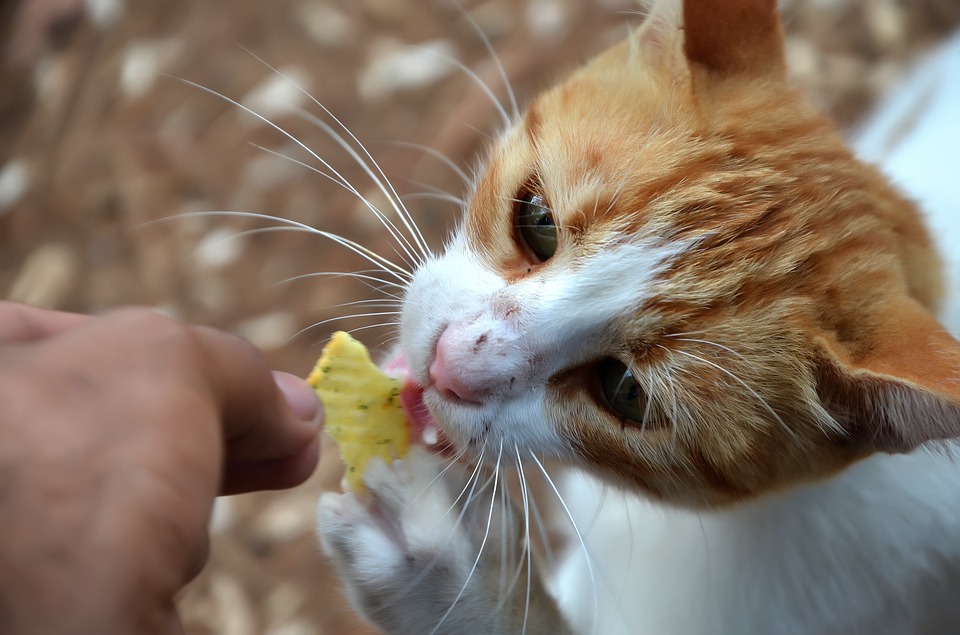This comprehensive guide aims to address the concerns and questions pet owners may have about the potential for house cats to prey on rabbits. We'll delve into the intricacies of feline behaviour, rabbit vulnerability, and the potential risks involved in keeping these animals together. We'll also explore dietary needs, preventative measures, safety tips, and answer frequently asked questions.
Part 1: Understanding Feline Predatory Instincts

1.1. The Evolutionary Heritage of Cats as Hunters
- Survival Mechanism: Throughout their evolutionary history, cats have developed specialized hunting skills as a primary means of survival. Their ancestors, wild cats, relied on catching and consuming prey to meet their nutritional needs.
- Adaptations for Predation: Cats possess remarkable physical and sensory adaptations that enhance their hunting abilities. This includes sharp claws, powerful jaws, keen eyesight, exceptional hearing, and a heightened sense of smell.
- Instinctual Behaviour: These adaptations, combined with innate predatory instincts, are deeply ingrained in a cat's genetic makeup, making hunting an almost automatic response to certain stimuli.
1.2. The Role of Play and Stimulation
- Practising Skills: Cats engage in playful behaviours, such as chasing, pouncing, and batting at objects, as a way to practice and refine their hunting skills.
- Release of Energy: Hunting provides a vital outlet for a cat's natural energy and instincts. Without adequate opportunities for play and stimulation, cats may become bored and restless, leading to increased likelihood of unwanted behaviours.
Part 2: Rabbit Vulnerability and Defenselessness

2.1. The Physical Disadvantage of Rabbits
- Size and Agility: Rabbits are significantly smaller than cats, making them physically vulnerable to attack. They are also generally less agile and lack the defensive capabilities of larger prey animals.
- Limited Defensive Mechanisms: Rabbits possess sharp teeth and can kick with their hind legs, but these defenses are often insufficient to deter a determined cat.
- Natural Prey in the Wild: Rabbits are a common prey species for various predators in the wild, including foxes, weasels, and birds of prey, further highlighting their vulnerability.
2.2. The Impact of Fear and Stress on Rabbits
- Freeze Response: Rabbits often exhibit a "freeze response" when threatened, where they become immobile and silent, making them easier targets for predators.
- Heightened Anxiety: The presence of a cat can cause significant stress and anxiety in rabbits, impacting their behaviour, appetite, and overall wellbeing.
Part 3: Dietary Considerations for Cats and Rabbits
3.1. The Obligate Carnivore Diet of Cats
- Nutritional Requirements: Cats are obligate carnivores, meaning their bodies are specifically adapted to digest meat. They require a diet rich in protein, essential fatty acids, and taurine, which cannot be produced by their bodies.
- Inadequate Nutrients in Rabbit Meat: While rabbits provide a source of protein, their meat lacks the essential nutrients required for optimal cat health, including taurine and arachidonic acid.
- Digestive System Adaptations: Cats have short digestive tracts designed to efficiently process meat. Feeding them rabbit meat could lead to digestive issues and potential nutritional deficiencies.
3.2. The Herbivorous Diet of Rabbits
- Fiber-Rich Requirements: Rabbits are strict herbivores, needing a diet high in fiber to support their digestive health. Their diet primarily consists of hay, fresh vegetables, and a limited amount of pellets.
- Potential for Nutritional Deficiencies: Feeding a rabbit to a cat could significantly disrupt its nutritional balance, leading to deficiencies in essential vitamins, minerals, and fiber.
Part 4: Risks of Cohabitation: Physical Harm, Stress, and Disease
4.1. Physical Harm and Predation
- Fatal Attacks: Cats are capable of inflicting serious injuries and even killing rabbits. Their predatory instincts, combined with their physical capabilities, make them a significant threat to rabbits.
- Injuries During Play: Even if a cat's intentions are not malicious, their sharp claws and teeth can inflict wounds on rabbits during play, leading to infections or complications.
4.2. Stress and Behavioural Changes
- Fear-Induced Reactions: The constant presence of a cat can trigger fear and anxiety in rabbits, leading to changes in behaviour, such as hiding, reduced appetite, and aggression.
- Territorial Disputes: Cats may view rabbits as competitors for resources or territory, leading to conflict and increased aggression.
- Health Impacts: Chronic stress can have a detrimental effect on rabbit health, increasing susceptibility to illnesses and decreasing lifespan.
4.3. Disease Transmission
- Parasites: Both cats and rabbits can carry parasites that can be transmitted between them, including intestinal worms, fleas, and mites.
- Infectious Diseases: Certain infectious diseases, such as ringworm, upper respiratory infections, and some forms of bacterial infections, can be spread between cats and rabbits.
- Veterinary Care: If any signs of illness are observed in either animal, prompt veterinary attention is crucial to diagnose and treat potential health issues.
Part 5: Preventing Interactions and Ensuring Safety
5.1. Strict Separation and Supervised Interaction
- Separate Housing: It's crucial to maintain separate enclosures for cats and rabbits, completely preventing contact and potential harm.
- Supervised Interaction: If supervised interaction is desired, it should be conducted in a controlled environment where the cat cannot physically harm the rabbit. The owner should be present at all times to monitor the situation and intervene if necessary.
- Gradual Introduction: If introducing cats and rabbits, it's recommended to do so gradually, allowing them to acclimate to each other's scents and sounds before any direct contact.
5.2. Enrichment for Cats and Rabbits
- Stimulation and Play: Providing cats with ample opportunities for play and enrichment can help redirect their predatory instincts and prevent them from targeting rabbits.
- Safe Havens for Rabbits: Ensuring that rabbits have secure hiding places where they feel safe from the cat is essential for their wellbeing.
- Environmental Enrichment: Creating stimulating environments for both cats and rabbits can help reduce stress and encourage natural behaviours.
5.3. Training and Socialisation
- Positive Reinforcement Training: Training cats with positive reinforcement techniques can help them learn appropriate behaviours around rabbits, reducing aggression and predatory instincts.
- Early Socialisation: Socialising cats from a young age to other animals can help them develop tolerance and acceptance of different species.
- Professional Guidance: If you are unsure about how to manage your cat's behaviour or introduce them to a rabbit, seeking guidance from a qualified animal behaviourist can be beneficial.
Part 6: FAQs
6.1. What are the signs that my cat is hunting a rabbit?
Signs that a cat is hunting a rabbit include stalking behaviour, crouching low to the ground, dilated pupils, quick movements, and vocalizations like hissing or growling.
6.2. Can I leave my cat and rabbit unsupervised?
It is highly risky to leave cats and rabbits unsupervised. Even if they have never shown aggression, a sudden change in circumstances can trigger predatory behaviour.
6.3. Can my cat get sick from eating a rabbit?
Yes, cats can get sick from eating rabbits. Rabbits can carry parasites and bacteria that can be harmful to cats, especially if they are not properly cooked.
6.4. How do I know if my rabbit is stressed by my cat?
Signs that a rabbit is stressed by a cat include hiding, increased heart rate, trembling, aggression, and a decrease in appetite.
6.5. What should I do if my cat attacks my rabbit?
If your cat attacks your rabbit, immediately separate them. If the rabbit is injured, seek veterinary attention promptly. Consider consulting with an animal behaviourist to address the underlying causes of aggression.
6.6. Can I introduce a cat and rabbit to each other without supervision?
It is never safe to introduce a cat and rabbit without supervision, regardless of how well-behaved they seem. The potential for harm is always present.
6.7. Is it better to get a neutered cat if I have a rabbit?
Neutering can reduce a cat's aggression and territoriality, making them less likely to attack rabbits. However, it is important to remember that even neutered cats can still have strong predatory instincts.
6.8. What if my cat has never shown interest in hunting rabbits?
Even if your cat has never shown an interest in hunting rabbits, it is still important to take precautions to prevent any potential harm. Cats can develop predatory behaviours unexpectedly.
This comprehensive guide offers valuable information to help pet owners understand the potential risks and make informed decisions about cohabitating cats and rabbits. Remember, safety and wellbeing should always be the top priorities, and seeking professional guidance is advisable for managing the interaction between these two species.
Everyone is watching
-

Do Rabbits Lay Eggs? (The Surprising Truth)
OTHER TYPES OF PETSThis article will unravel the common misconception that rabbits lay eggs, exploring the fascinating world of r...
-

Can Rabbits Eat Grapes? A Guide to Safe Rabbit Treats
OTHER TYPES OF PETSThis comprehensive guide will explore the safety and suitability of grapes for rabbits, providing detailed inf...
-

What's a Group of Rabbits Called? (A Comprehensive Guide)
OTHER TYPES OF PETSThis article delves into the fascinating world of rabbits, exploring the various terms used to describe a grou...
-

Predators That Hunt Rabbits: A Guide to Natural Enemies
OTHER TYPES OF PETSI've always been fascinated by the circle of life, that delicate dance between predator and prey. Growing up ...
-

Are Rabbits Nocturnal Animals?
OTHER TYPES OF PETSThe question of whether rabbits are nocturnal animals is a fascinating one, with a surprisingly complex answer...
